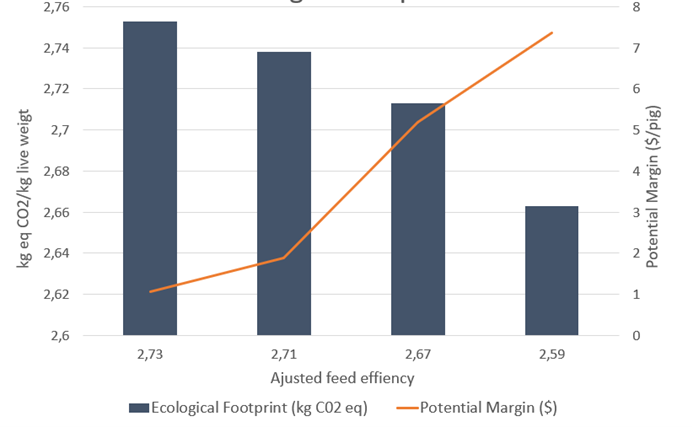By Laurence Nantel
Editor’s note: Laurence Nantel is Swine Nutrition Advisor, Trouw Nutrition. She can be contacted at ‘laurence.nantel@trouwnutrition.com.’

The Canadian pork industry cares about the environmental impact that comes with feeding its many global consumers. As consumers continue to demand healthier and more responsible agricultural practices, environmental concerns will inevitably define the future of food production.
This societal pressure has forced us to define a more durable agricultural strategy oriented toward carbon reduction. To achieve this objective, we first need to analyze the carbon life cycle of agricultural businesses. In doing so, it is possible to establish a benchmark to evaluate carbon intensity. Although it may seem difficult to quantify emissions, tools are available on the market to make it accurate and easy.
Measuring carbon footprint
Trouw Nutrition has long used Watson® software to help producers make day-to-day decisions about ration formulations, transport management, the use of feed additives or antibiotics, and more recently, sustainable development. This new sustainability component allows for the calculation of the ‘carbon budget’ of a farm and express it as kilograms of carbon dioxide equivalent: a unit of comparison between emission sources, including methane and nitrous oxide.
With this technology, it is now possible to predict the quantity of environmental pollutants associated with the pork value chain, from crop production and feed milling, to feed intake and manure management, to transportation. Watson generates various reports showing the carbon dioxide equivalent of a farm, with a breakdown representing different parts of an operation. This allows producers to identify areas of focus to potentially reduce carbon intensity. Producers also have access to several scenarios in which they can identify the impacts of genetics, health status, management practices and energy inputs.
To assess carbon intensity, we must examine the business in detail, taking into account management practices, the feeding program and animal performance. For example, since feed contributes most to the carbon intensity of a farm, it is important to calculate the transport distance for each feed ingredient, from the field to the feed mill, and from the feed mill to the farm. A farm that produces its own crops for feed reduces its emissions associated with feed transportation. Manure management has the second-largest influence on emissions. Enteric fermentation – the process through which livestock digest feed – results in the formation of methane, released with manure.
Though agriculture in general has a smaller impact on emissions compared to some industries, carbon reduction still matters. When the goal is to reduce emissions, several interesting strategies can be implemented. For example, manure pits can be covered or more responsible energy use can be targeted.

With a Watson analysis, it is also possible to identify how improvements to swine performance can support the environment. In other words, improved feed efficiency can not only potentially increase margins but also decrease a farm’s ecological impact. More specifically, a five per cent improvement in feed conversion reduces the carbon intensity of a farm by three per cent (Figure 1).
By using carbon intensity as a practical measure to improve the overall performance of a farm, it is possible to achieve both economic and ecological sustainability. Watson’s assessment tool also enables the ranking of pork producers against other types of livestock producers from around the world.
Altogether, a product with a smaller carbon footprint is more appealing for the consumer and the market. As such, the future of pork production involves measuring ecological impacts to improve performance and public trust.





